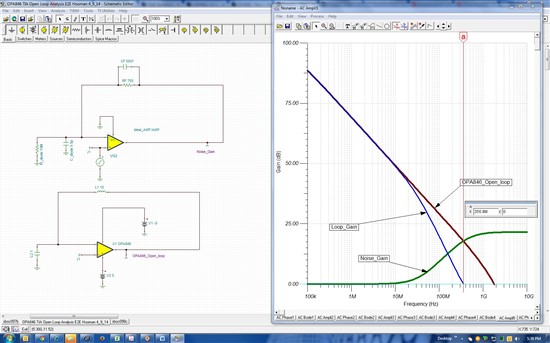Hi All,
We'd like to ask the measurement of phase margin and gain margin on OPA846.
<Question>
Please refer to attached file.This is the result of phase and gain simulation using OPA846.
2678.Phase margin and gain margin.pdf
OPA846 is trans impedance amplifers.
We don't know how to measure of phase margin and gain margin using trans impedance amplifers.
If it is possible, please teach us them?(We appriciate you, if you write down to our attached file the content to measure.)
We need your help.
Kind regards,
Hirotaka Matsumoto
-
Ask a related question
What is a related question?A related question is a question created from another question. When the related question is created, it will be automatically linked to the original question.





